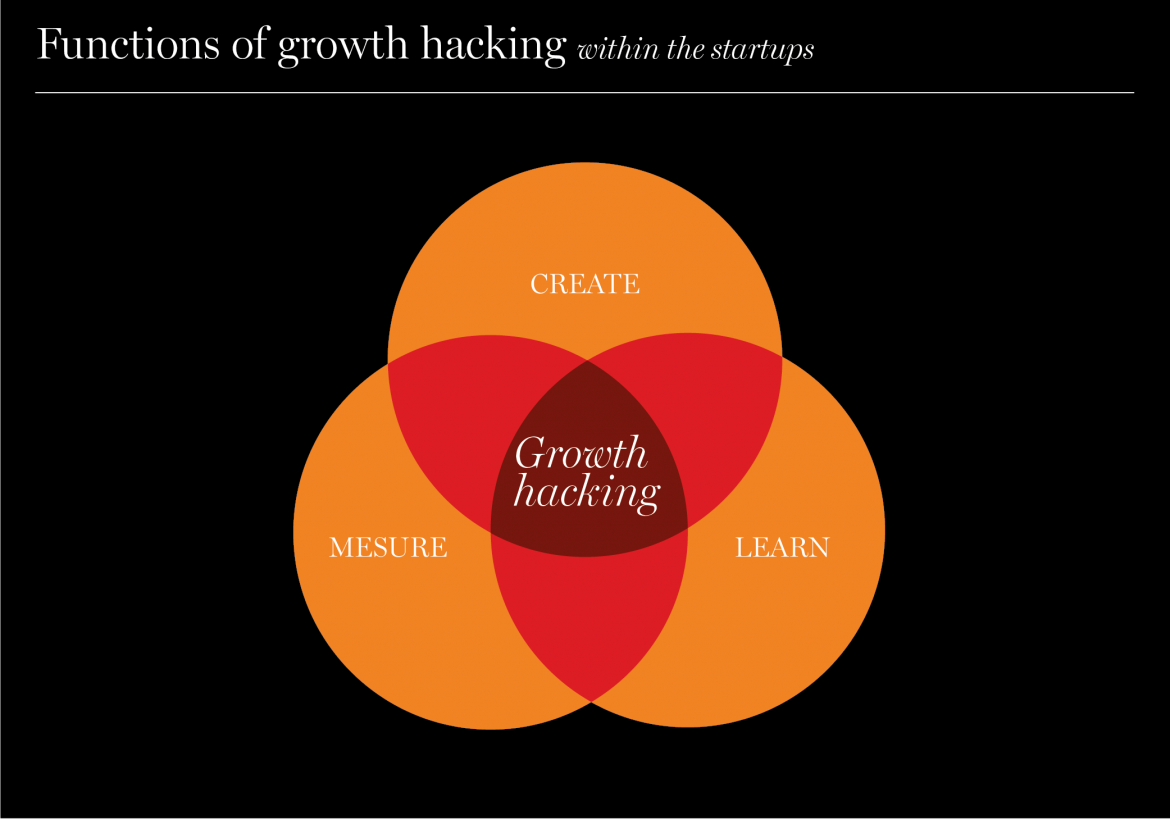The start-up ecosystem understands that growth is no longer an option, but the only way to cope with the dizzying speed of the new interconnected environment. Given this requirement, a new approach emerges in the way marketing and communications are approached, and which in fact transcends its frontiers and becomes a business proposition. It is known as growth hacking.
The concept everyone is talking about first appeared in 2010, in Sean Ellis’ Startup Marketing blog, defined as a multidiscipline characterized by its goal of growth, and a strategy based on two essential pillars: creativity and analysis.
In Silicon Valley, there are already key figures in this multidisciplinary field, amongst which is Andrew Chen, Uber’s growth driver, for whom a growth hacker is a professional who constantly wonders how he can grow his business and answers that question analytically and creatively, with A/B tests, landing pages, viral techniques and content marketing strategies crafting the SEO, along with many other alternatives. The frontiers of growth hacking have already fared beyond Silicon Valley. In fact, the figure of the growth expert is among the most sought after professional profiles throughout the world, and among the best-paid, as Nilton Navarro, Infojobs’ Social Media Manager, points out: “Companies need tech profiles that help them grow and strengthen their digital transformation. The Growth Hacker is one of the most sought-after emerging profiles because they are a keystone in their companies. This profession barely existed in the labour market at the beginning of the decade and suffers from a lack of trained professionals. In addition, salaries usually exceed €30,000 gross per year, so it becomes an excellent opportunity for those young people who want to steer their training towards a profession for the future or for those who want to redirect their current profession.”
But what is the growth hacker’s strategic recipe for success? All in all, its approach fits in perfectly with the approach of the Lean Startup method, a key to how start-ups function. This methodology, popularized by Eric Ries, is based on the so-called “minimum viable product,” which features launching successive versions of the product in order to measure its impact before developing it, following the virtuous circle of creating-measuring-learning. From these three pillars, we can define the different basic strategies of growth hacking:
CREATE
Innovation is key to driving growth. Among the multiple decisions that can be adopted to foster growth, those that stand out involve empowering the user, focusing on virality. Hotmail pioneered this practice, with a simple but extremely effective action: place a link at the end of each e-mail promoting free accounts. More recent techniques, such as influencer marketing or content marketing, seek to establish these links with the user, which has also been achieved through other channels, such as integration into large social networks, such as Spotify with Facebook.
MEASURE
As Avinash Kaushik, one of the most renowned experts in digital marketing points out, there is currently a huge field of opportunities to take intelligent decisions based on the analytical study of data. The multiple tools of digital monitoring, and the big data that the platforms themselves generate, means they can verify the results of any action almost in real time. Actively listening to the user is key, not only for growth, but for the development of the products themselves.
LEARN
In these changing times, learning is the only way to evolve. Without experimentation, without constant dialogue with the public and without a flexible attitude, it is impossible to maintain the constant beta attitude imposed by the new economy.



















